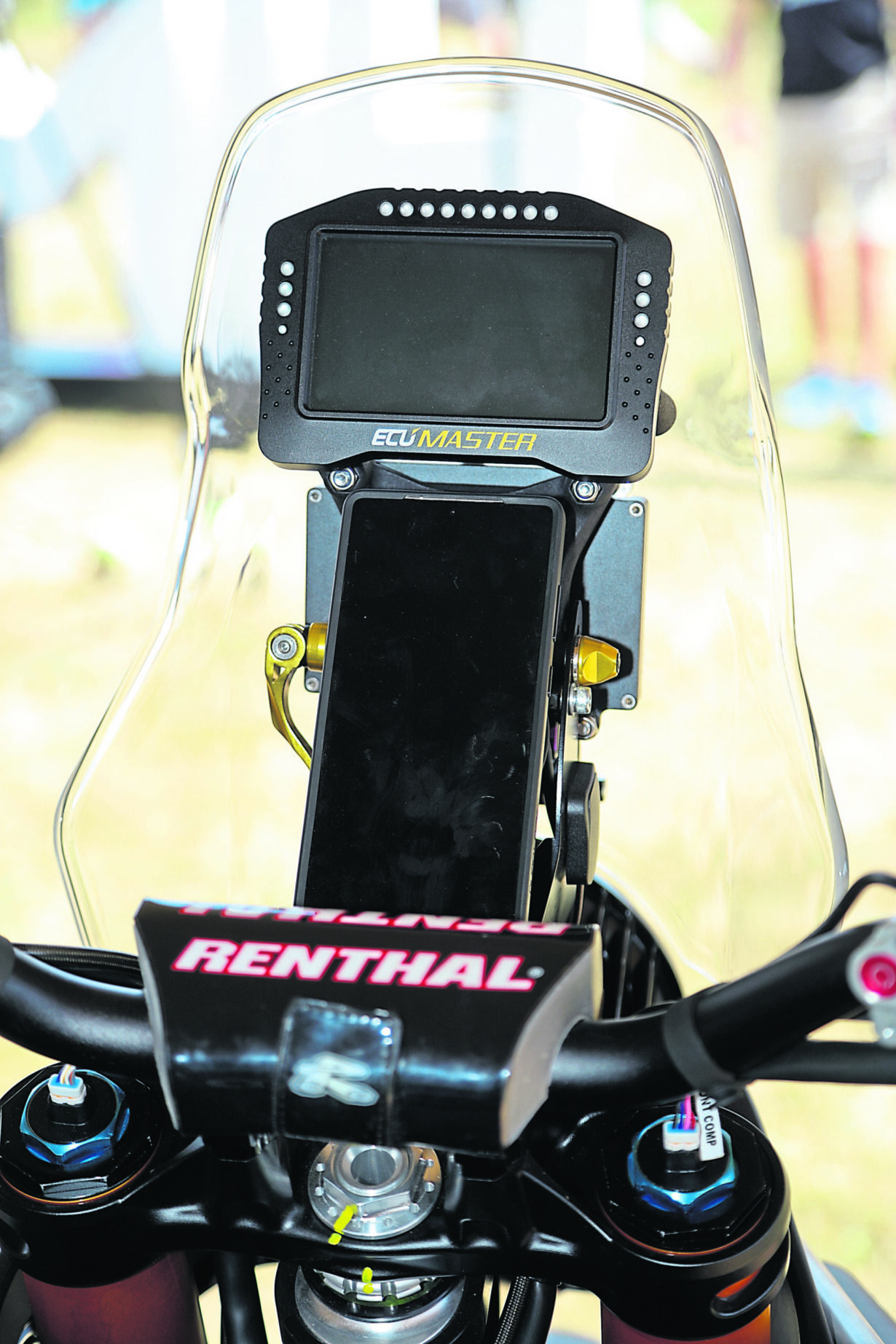It’s not often that you find yourself drooling at the chassis tech on an electric motorbike. But that’s just what we were doing at the ABR Festival last month, when we clapped eyes on this piece of work. It’s the Royal Enfield Flying Goat – a prototype EV bike, handbuilt by the firm’s R&D engineers at Bruntingthorpe, and is festooned with sweet chassis kit, wrapped around a powertrain borrowed from the Stark Varg MX racer.

The swingarm is pure sauce – a handmade aluminium braced unit that wouldn’t look out of place in the MotoGP paddock, made by Harris Engineering (Enfield owns Harris as part of its British R&D department, of course). Ditto the main frame sections: a couple of chunky aluminium arms which link the swingarm pivot to the other part of the ‘frame’ – a pair of Stark Varg battery packs, with their finned magnesium outer casings. Fitting two of the beefy powerpacks gives decent range and performance, and also looks the business.
Tucked in behind is the 80bhp Stark electric motor, making this the most powerful bike from Royal Enfield by a fair margin. The spec is rounded off by a full set of semi-active electronic Öhlins suspension: USD forks and shock, plus a neat Nissin radial front brake caliper.
Enjoy everything More Bikes by reading the MoreBikes monthly newspaper. Click here to subscribe, or Read FREE Online.

Speaking to the test riders, they say the Himalayan lookalike machine is an absolute hoot to ride, with superb performance. The firm has been running a fleet of these bikes on a test programme, including tests high up in the Himalayas, where petrol-powered machines struggle through lack of oxygen in the high-altitude air, as part of its research on EV two-wheelers. It’s unlikely we’ll be able to buy anything like this soon though (the test mules cost over £60k each to make apparently). Rather, the firm is learning lessons on what works, and how it might apply electric power to bikes, be that in mild/full hybrid form with petrol power, or in full battery-powered formats.


